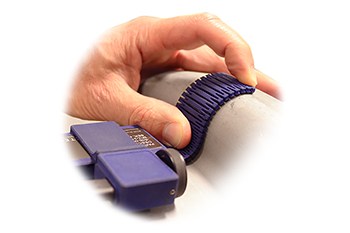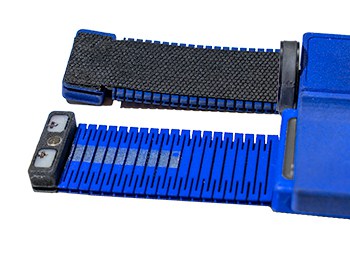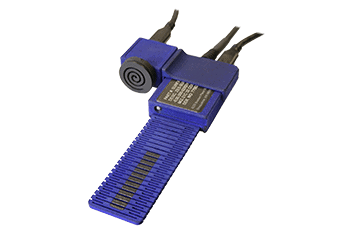The Next Generation of ECA Probes Improve Inspection Flexibility
By Bill Ziegenhagen, Zetec Product Manager – Eddy Current Probes
One practical limitation of eddy current array (ECA) technology is that as the operator moves the probe across the surface under test, the excitation coils need to be close to the material in order to produce the signal quality required for an accurate inspection.
It’s a challenge when you’re dealing with complex geometries, different weld shapes and materials, tight spaces, and rough surfaces.
Consider the inspection of a circumferential butt weld joint on a pipe. Where the positive curvature of the pipe exterior, the positive curvature of the circumferential weld crown bead, and the negative curvature of the joining area at the toe of the weld all intersect is difficult for an eddy current probe to reach because of the planar nature of typical array assemblies. In addition, the weld itself is a non-uniform surface.
Thus, there is a need for a probe design that can keep the excitation coils and sensing devices, whether coils or other sensors, properly aligned with the surface of the material as the operator slides it over the surface.
Customized Probes
One approach is to design a surface array probe that’s shaped for one specific application, like rivets, bolt holes, or a component that will subjected to repeated testing, like wheels, door hinges, or gearing.
Using CAD drawings and 3D printing, it’s possible to manufacture an eddy current probe that’s shaped to precisely fit the geography you need. Though it’s designed for only one job, a custom-made probe can produce consistent data acquisition conditions over and over again.
Flexible Probes
Another approach is to use an ECA probe with a flexible, durable wear surface that allows the coils to bend and remain nominally perpendicular to the surface when that surface is rough, irregular, or complex.

Because this type of flexible probe can conform and adapt to different surfaces and contours, it can handle a range of ECA inspections on the same job ticket. For example, a technician on a flight line can inspect rivets on a curved wing, weld joints on turbine rotors, and the multi-layered skin of a fuselage with the same flexible surface array probe.
It’s also efficient. In the case of a non-ferromagnetic weld, a flexible surface array probe with just two inches of coverage can encapsulate the weld bead, transition zone, and heat-affected zones in a single pass.

One important consideration is the material on the wear surface. Probe manufacturers offer a variety of materials as a wear surface, including plastic films and abrasion-resistant fabrics like SuperFabric™.
The thickness of the material will affect the probe’s overall flexibility and eddy current signal quality. If the surface is too thin, the flex circuit may not be durable enough to withstand repeated abrasion against potentially rough metal surfaces.
A Modular Approach
Customized and flexible surface array probes can quickly and accurately test a range of materials and geometries but you have to replace the entire assembly if one element of the probe wears out or fails.

One approach to improving the versatility and service life of ECA probes is a modular one. In 2019, Zetec introduced the Surf-X flexible ECA probe with swappable coil sets for specific applications. Each probe is comprised of an electronics module and detachable encoder that can be used interchangeably with different Surf-X array probe coil set. Users in the field can switch out a coil set in less than a minute.
Zetec offers a multitude of coil sets, including sets for butt or t-welds; rows of rivets on an airplane skins; far-side flaws on thick sheets of aluminum; and tape probe coil sets that find surface flaws on complex geometries.
The probe’s encoder can connect in multiple locations on both the handle and electronics module. As Zetec introduces additional coil sets in the future, the Surf-X module, encoder, and cables can be re-used, improving the return on investment.
Zetec offers Surf-X coil sets with three wear-surface options: no wear surface for inspecting small indications on smooth materials; a cloth wear surface for protecting the array coils on smooth or polished surfaces; and SuperFabric for rough surfaces.
More Coverage and Versatility
Regardless of whether you use a custom probe shape, a flexible surface array probe, or a modular approach like Surf-X, today’s ECA probes are simpler to use and provide greater inspection coverage in a fraction of the time compared to penetrant testing, magnetic testing, or pencil probes.
The key is to focus on a probe’s flexibility—literally, in terms of the surfaces and geometries it can handle, and its ability to help technicians be more productive while maximizing the value, versatility, signal quality, and service life of the probe.
Zetec is a global leader in nondestructive testing (NDT) solutions for the critical inspection needs of industries the world counts on every day. To learn more, contact Zetec today!
